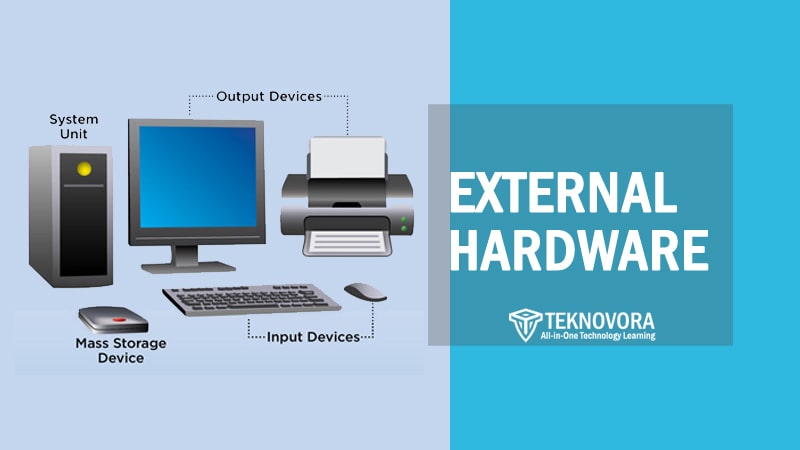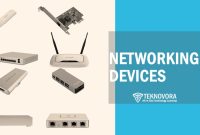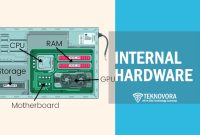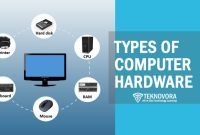You press a key, move a mouse, or glance at your screen—and your computer responds in milliseconds. But what makes this interaction possible? While much attention is given to what’s inside the machine—the processor, memory, or graphics card—the devices you actually touch and see every day are often External Hardware. These components act as the bridge between human intent and digital execution.
From the moment you power up a computer, external hardware starts playing its role: the monitor displays the boot screen, the keyboard awaits your login input, and the mouse gives you control over everything else. These are not just accessories—they’re fundamental to the computing experience. Whether it’s a printer in an office, a webcam for video calls, or a USB drive holding important files, external devices help us communicate with and extend the capabilities of the machines we depend on.
In this article, we’ll explore what external hardware really is, the many types and functions it includes, and how it fits into the broader computer ecosystem. Whether you’re a beginner building your first PC or a tech enthusiast refining your setup, understanding external hardware is key to maximizing both functionality and user experience.
What Is External Hardware?
External hardware refers to any physical device that is connected to the outside of a computer system and interacts with it through input, output, storage, or communication functions. Unlike internal hardware—which resides inside the computer case and handles core operations—external hardware operates from the outside, enabling users to interact with the machine, transfer data, or expand functionality.
These components are sometimes called peripheral devices, although the term “peripheral” typically refers to any hardware that’s not part of the computer’s core architecture. External hardware, therefore, includes a wide range of peripherals such as keyboards, mice, monitors, printers, external hard drives, and webcams.
How Is It Different from Internal Hardware?
The distinction between external and internal hardware lies in three key aspects:
- Location: Internal hardware is installed inside the system unit (e.g., CPU, RAM), while external hardware is plugged in or connected outside.
- User Interaction: External devices are what users physically touch, see, or hear—allowing for real-time interaction.
- Connectivity: External hardware typically connects through USB, HDMI, Bluetooth, or wireless interfaces, making installation simple and user-friendly.
Why External Hardware Matters
External devices make computing accessible and usable. Without them, even the most powerful computer would be a silent, inaccessible black box. Imagine a laptop with no screen, no keyboard, or no way to connect to the internet—it simply wouldn’t be usable.
They also offer:
- Modularity: Devices can be added or removed based on user needs.
- Flexibility: Multiple input/output devices can be connected to tailor workflows.
- Scalability: Additional storage or specialized tools can be integrated without opening the computer case.
A Practical Analogy
Think of a computer as a body:
- The internal hardware is the brain, heart, and nervous system—handling logic, memory, and control.
- The external hardware acts as the eyes, hands, and mouth—enabling interaction with the world.
Without external hardware, the “body” has no way of communicating or expressing itself.
Key Components of External Hardware
External hardware isn’t limited to just keyboards and monitors—it encompasses a broad range of devices that handle input, output, storage, and even communication. These components are what allow users to physically interact with a computer, receive feedback, and expand system capabilities without accessing the internal structure.
Let’s explore the primary categories of external hardware devices, along with their functions and examples.
Input Devices

Input devices allow users to send commands or data to the computer. They are essential for typing, navigating, recording, scanning, and even voice control.
Common Examples:
- Keyboard – Inputs text and command shortcuts.
- Mouse – Navigates graphical interfaces with clicks and gestures.
- Webcam – Captures video for calls or recording.
- Scanner – Digitizes physical documents and images.
- Microphone – Captures audio input for voice commands or recording.
These devices are designed for user interaction and come in various forms—from wired to wireless, and from basic to high-end ergonomic versions.
Output Devices

Output devices take data from the computer and present it in a human-perceivable format—visual, auditory, or physical.
Common Examples:
- Monitor – Displays visual information, from user interfaces to videos.
- Printer – Converts digital documents into physical paper outputs.
- Speakers – Output sound for media playback, alerts, or calls.
- Projector – Enlarges screen output for presentations or media viewing.
They play a crucial role in how users receive and interpret processed data from the system.
Storage Devices

External storage devices are used to expand the computer’s storage capacity or provide a means for backup, data transfer, and portability.
Common Examples:
- External Hard Drives – Offer large capacities for backups and archives.
- USB Flash Drives – Compact and convenient for transferring files.
- Memory Cards (via card readers) – Used for cameras, phones, and media storage.
These are typically plug-and-play, compatible across devices, and often encrypted for security in professional environments.
Networking Devices

Some external hardware components are designed to connect computers to the internet or other networks.
Common Examples:
- USB Wi-Fi Adapters – Provide wireless connectivity when no built-in module is present.
- External Ethernet Adapters – Add wired networking via USB or Thunderbolt.
- Mobile Hotspots – Allow network access using cellular data.
Such devices are especially useful in laptops or compact systems with limited built-in networking hardware.
Multifunction Peripherals

Certain external peripheral devices combine multiple functions, saving space and simplifying workflows.
Common Examples:
- All-in-One Printers – Function as a printer, scanner, copier, and fax machine.
- Docking Stations – Expand laptop connectivity (USB ports, HDMI, LAN, audio).
- External GPU Enclosures – Provide powerful graphics capabilities via Thunderbolt or USB-C.
These multifunction devices are particularly useful for professionals, remote workers, and mobile users.
Types of External Hardware
External hardware can be classified in several ways depending on its role, how it connects to the computer, and the context in which it is used. These classifications help users better understand what type of device they need based on their specific requirements—whether for work, gaming, storage, or accessibility.
Classification Based on Function
This is the most common and foundational way to categorize external hardware.
| Function | Description | Examples |
|---|---|---|
| Input | Sends data to the computer | Keyboard, mouse, scanner, webcam |
| Output | Receives data from the computer | Monitor, speakers, printer |
| Storage | Saves or transfers data externally | External SSD, USB flash drive, memory card |
| Communication | Enables data transmission between systems | USB Wi-Fi adapter, Bluetooth dongle |
Each function addresses a different part of user-computer interaction or system expansion.
Classification Based on Connection Type
The way a device connects to a computer can affect its speed, compatibility, and ease of use.
| Connection Type | Description | Common Devices |
|---|---|---|
| USB (2.0, 3.0, Type-C) | Widely used, fast, plug-and-play | Mouse, keyboard, flash drive, printer |
| HDMI / DisplayPort | High-definition video/audio transmission | Monitors, projectors |
| Bluetooth | Wireless, short-range connectivity | Wireless keyboard, headphones |
| Wi-Fi | Wireless internet/network communication | Wi-Fi adapters, mobile hotspots |
| Thunderbolt | High-speed data and video transfer | External GPU, docking station |
Choosing the right connection type can influence performance and portability.
Classification Based on Use Case
Devices can also be grouped based on the environment or purpose they’re designed for.
| Use Case | Device Focus | Examples |
|---|---|---|
| Home / Personal | General computing, media, light work | Monitor, mouse, printer, webcam |
| Office / Business | Productivity and multitasking | All-in-one printers, scanners, external HDDs |
| Creative / Design | High-resolution output, input precision | Drawing tablets, external GPU, microphones |
| Mobile / Travel | Compact, portable, wireless devices | USB hubs, Bluetooth keyboards, travel routers |
This approach is helpful when building a setup tailored to specific professional or lifestyle needs.
Summary Table: Classification of External Hardware
| Classification Method | Categories | Example Devices |
|---|---|---|
| By Function | Input, Output, Storage, Communication | Keyboard, Monitor, SSD, Wi-Fi dongle |
| By Connection Type | USB, HDMI, Bluetooth, Wi-Fi, Thunderbolt | Flash drive, Projector, Headset |
| By Use Case | Home, Office, Creative, Travel | Webcam, Scanner, Drawing Tablet, Docking Station |
Functions of External Hardware
External hardware components are more than just accessories—they serve as essential bridges between the user and the internal processes of a computer. Their functions span across data interaction, media output, system expansion, and user accessibility. Understanding these roles is key to optimizing any computing environment, whether personal, professional, or industrial.
User Interaction
At the most fundamental level, external hardware makes interaction with a computer possible. Devices like keyboards, mice, and touchpads translate human commands into machine-readable inputs. Without these tools, users would have no intuitive or practical way to operate a system.
Examples:
- Mouse and Keyboard for desktop control
- Touchscreen Monitors for direct interaction
- Game Controllers for immersive input in gaming
Data Input and Output
External devices are responsible for the two-way flow of information. Input devices feed data into the system, while output devices present the result of processed data in visual, auditory, or physical formats.
Input Function Examples:
- Typing an essay via a keyboard
- Scanning documents for digital use
- Recording a podcast using a microphone
Output Function Examples:
- Watching a movie on a monitor
- Printing a report
- Hearing alerts through speakers
This interaction cycle is what enables effective computing in everyday scenarios.
Communication and Network Access
External hardware also plays a major role in connecting computers to other devices and networks. These tools enable wireless access, expand communication capabilities, and support device-to-device integration.
Examples:
- External Wi-Fi Adapters for wireless internet access
- Bluetooth Dongles to connect headsets or controllers
- USB-to-Ethernet Adapters for stable, wired networking
These devices are especially critical in compact laptops and desktops without built-in wireless modules.
Portability and Flexibility
One of the greatest advantages of external hardware is portability. Devices like flash drives, portable SSDs, and external DVD burners allow users to carry data or functionality across multiple systems.
Benefits:
- Transfer files without internet access
- Use the same printer or mouse across different computers
- Expand a laptop’s functionality with a docking station
External hardware makes computing modular, meaning it can be customized and expanded without opening up the computer case.
System Expansion and Specialization
For power users, external devices can unlock new capabilities that internal hardware may not support—or may not be cost-effective to upgrade.
Examples:
- Adding an external GPU to boost graphics for video editing
- Using a professional-grade audio interface for sound recording
- Connecting a drawing tablet for digital artistry
In these cases, external hardware transforms a general-purpose machine into a specialized workstation.
Accessibility
External hardware also improves accessibility for users with disabilities or unique needs. There are a wide range of devices designed to support more inclusive computing.
Examples:
- Braille keyboards and displays
- Eye-tracking devices
- Adaptive game controllers
These tools help make technology usable for a wider audience, enhancing digital equity.
External Hardware vs Internal Hardware
While both external and internal hardware components are essential to a fully functioning computer, they serve very different roles and are structured around different priorities. Internal hardware drives performance and data processing. External hardware, on the other hand, provides accessibility, usability, and expanded capability.
Let’s compare these two classes of hardware more closely.
Functional Comparison
Internal hardware is responsible for the core operation of the system—processing tasks, storing data, and managing resources. External hardware, in contrast, enables interaction with the system and expands its functionality through input, output, and connectivity.
For example:
- A CPU (internal) executes commands, but a keyboard (external) is needed to issue those commands.
- An SSD (internal) stores your operating system, but an external HDD helps with portable backup.
Location and Installation Differences
Internal hardware is housed inside the system unit (tower, laptop shell, etc.), and requires technical skill for installation or replacement. External hardware is plug-and-play, typically connected via USB, HDMI, or wireless signals.
| Feature | Internal Hardware | External Hardware |
|---|---|---|
| Location | Inside computer case | Outside, physically separate |
| Installation | Requires tools and disassembly | Plug-and-play, no tools needed |
| User Accessibility | Not directly accessible during use | Accessible and usable directly |
| Risk of Damage | Protected inside case | More exposed to wear and tear |
Dependency and Integration
Most external hardware devices depend on internal hardware to function. For instance, a printer requires drivers and processing power from the system to output documents. However, a computer with all internal hardware—but no external devices—offers no way to interact with users.
They are complementary, not competitive:
- Internal hardware handles logic and data.
- External hardware handles interaction and presentation.
Real-World Examples
Storage Devices vs Input Devices
- HDD (internal) stores operating system data.
- Keyboard (external) inputs user commands.
Storage Devices vs Output Devices
- SSD (internal) keeps applications ready for launch.
- Monitor (external) displays the application window.
Storage Devices vs Processing Devices
- Storage (external/internal) keeps files intact.
- CPU (internal) runs operations on those files.
Storage Devices vs Peripheral Devices
- External hard drive may be both a storage and peripheral device.
- It demonstrates how categories can overlap depending on function and context.
Summary Table: Internal vs External Hardware
| Aspect | Internal Hardware | External Hardware |
|---|---|---|
| Main Function | Processing, memory, system control | Input/output, communication, expansion |
| Installation | Inside system unit, requires tools | External ports or wireless, plug-and-play |
| Accessibility | Limited (not user-facing) | Directly used and handled by user |
| Examples | CPU, RAM, GPU, motherboard | Keyboard, mouse, monitor, printer |
| Portability | Stationary | Often portable or easily swappable |
Examples of Common External Hardware Devices
To fully grasp the range and purpose of external hardware, it helps to look at real-world examples across different use cases. Whether you’re a student, a remote worker, or a professional designer, external hardware plays a crucial role in shaping your digital workflow.
Below are categorized examples that reflect how external hardware adapts to personal, business, and creative environments.
Personal Use
For everyday users, external hardware helps make computers accessible and enjoyable. Devices in this category focus on basic interaction, media consumption, and casual productivity.
| Device | Function |
|---|---|
| Keyboard & Mouse | Core input devices for navigation and control |
| Monitor | Displays system visuals and media |
| Webcam | Enables video calls and streaming |
| USB Flash Drive | Transfers files between systems |
| Headphones | Allows private audio playback |
These devices are essential for home users, students, and general computer users.
Office & Business Use
In a business setting, external hardware is geared toward efficiency, documentation, and connectivity.
| Device | Function |
|---|---|
| Printer / Scanner | Generates or captures physical documents |
| External Hard Drive | Stores backups or large project files |
| Docking Station | Expands laptop ports for workplace peripherals |
| Barcode Scanner | Inputs data in retail or inventory environments |
| Conference Webcam | Facilitates professional virtual meetings |
Business-grade hardware often emphasizes durability, compatibility, and multi-functionality.
Creative & Professional Use
For creatives and specialists, external devices offer precision, performance, and specialized control.
| Device | Function |
|---|---|
| Drawing Tablet | Digital sketching, design, and illustration |
| External GPU Enclosure | Enhances graphic processing power |
| Audio Interface | High-quality sound input/output for production |
| Studio Microphone | Clear, professional-grade audio capture |
| Color-Calibrated Monitor | Accurate color display for visual professionals |
In these use cases, external hardware directly influences the quality of output and workflow efficiency.
How External Hardware Connects to a Computer
The effectiveness of external hardware relies heavily on how well it connects to the computer system. Connection types impact speed, compatibility, functionality, and ease of use. Understanding these connection methods helps users choose the right hardware and troubleshoot problems when they arise.
Let’s explore the most common connection types hardware and how they work.
USB (Universal Serial Bus)

USB is by far the most common method of connecting external hardware. It’s widely supported across devices and operating systems and offers fast data transfer with plug-and-play simplicity.
Common USB Types:
- USB 2.0 – Older standard, sufficient for keyboards/mice
- USB 3.0/3.1 – Faster speeds for flash drives and external HDDs
- USB-C – Reversible connector with power delivery and high-speed transfer
Used For: Mice, keyboards, printers, flash drives, external SSDs, webcams, game controllers.
HDMI / DisplayPort

These are used for transmitting high-definition video and audio signals from the computer to output devices like monitors and projectors.
- HDMI (High-Definition Multimedia Interface) – Common in TVs and general monitors
- DisplayPort – Preferred in high-end monitors and professional graphics environments
Used For: Monitors, projectors, external displays.
Bluetooth

Bluetooth enables wireless communication between devices over short distances without cables. It’s ideal for peripheral hardware where portability and cable-free convenience are valued.
Used For: Wireless keyboards, mice, speakers, headphones, gamepads.
Advantages:
- No ports needed
- Supports multiple device pairings
- Compact and low power consumption
Wi-Fi
:strip_icc():format(webp)/kly-media-production/medias/4437941/original/013676000_1684836464-high-angle-wi-fi-router-with-vacuum-cleaner.jpg)
Wi-Fi allows external devices to connect wirelessly to a network or directly to a computer. Unlike Bluetooth, Wi-Fi offers broader bandwidth and longer range.
Used For:
- Wireless printers
- Cloud-enabled scanners
- External drives with network access
- Mobile hotspots
Wi-Fi-enabled devices are increasingly popular in smart office and home environments.
Thunderbolt
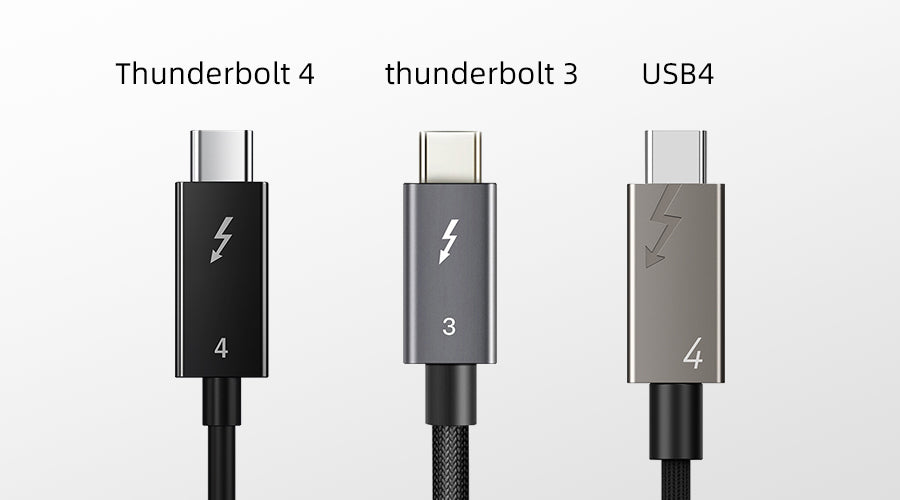
Thunderbolt is a high-speed interface that combines data, video, audio, and power delivery in one connection—ideal for high-performance external devices.
Thunderbolt 3 & 4 Highlights:
- Supports USB-C form factor
- Up to 40 Gbps transfer speed
- Dual 4K monitor support
Used For: External GPU enclosures, high-end docking stations, fast external SSDs.
Summary Table: External Hardware Connection Types
| Connection Type | Key Features | Common Devices |
|---|---|---|
| USB | Universal, fast, plug-and-play | Flash drives, printers, mice, webcams |
| HDMI / DP | High-quality audio/video transmission | Monitors, projectors |
| Bluetooth | Wireless, short-range, cable-free | Wireless keyboards, headphones |
| Wi-Fi | Long-range wireless connectivity | Network printers, NAS devices |
| Thunderbolt | Ultra-fast, supports power and video/audio | eGPU, external SSD, docking station |
Conclusion
External hardware plays a vital role in how we interact with computers, turning complex internal processes into user-friendly experiences. Whether it’s a mouse that lets you navigate the screen, a monitor that displays your work, or a flash drive that holds your files, these components bridge the gap between human intent and digital execution.
Understanding the types, functions, and connections of external hardware helps users choose the right tools for their needs—whether for productivity, creativity, entertainment, or accessibility. These devices not only enhance usability but also expand a system’s capabilities without the need to alter internal components.
As technology continues to evolve, external hardware will only become more advanced and integrated—blurring the lines between physical and digital, mobile and desktop, input and output. By investing in the right external devices and maintaining them properly, you ensure a more efficient, flexible, and enjoyable computing experience.
FAQ About External Hardware
What is an external hardware device?
An external hardware device is a physical component that connects to a computer from the outside to provide additional functionality. These devices are usually plug-and-play and include tools for input (like keyboards), output (like monitors), storage (like USB drives), or communication (like Wi-Fi adapters). Unlike internal components, external devices don’t require users to open up the computer case and are often used directly by the user during everyday tasks.
What are 5 examples of external hardware?
Here are five commonly used external hardware devices:
Keyboard – Used to input text and commands.
Monitor – Displays visual output from the computer.
Mouse – Enables point-and-click navigation.
Printer – Produces physical copies of digital documents.
USB Flash Drive – Allows portable data storage and transfer.
These devices are essential in both home and professional computing environments.
What is the difference between internal and external hardware?
The primary difference lies in location and function. Internal hardware components, like the CPU or RAM, are located inside the computer and handle processing devices, memory, and system operations. External hardware, on the other hand, resides outside the computer and facilitates user interaction, media output, or peripheral expansion.
Are external devices part of computer hardware?
Yes, absolutely. External devices are a subset of computer hardware. Hardware, by definition, includes all tangible components of a computer system. External devices—such as keyboards, monitors, printers, and storage drives—are just as critical as internal parts like the motherboard or CPU. They extend the computer’s functionality and are vital for user interaction and system performance.
What are input and output external devices?
Input devices are used to send data or commands to the computer. Output devices receive and present data from the computer to the user.
Examples
Input: Feeds data into the system (Keyboard, mouse, scanner)
Output: Delivers data to the user (Monitor, speakers, printer)
Some devices, like touchscreen monitors, serve as both input and output tools, showcasing the flexible nature of modern external hardware.

